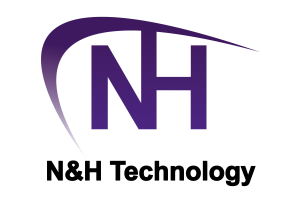Microcontrollers and Clock Generators
Precise Clock Generators - Integrated in Chips
IoT microcontrollers must also be able to reliably perform communication tasks for data processing. For this they depend on a precise clock signal. Thanks to new integration technology, precise clock oscillators can now generate the clock directly in the chip.
The single most important innovation in business and commerce is the ability to move and analyze massive amounts of data to drive informed decisions. Wireless networking is at the heart of this data migration, and the ability to bridge the last mile of data through connected internet-of-things (IoT) devices is a vital part of the data cycle. Today, designs with discrete clocking and quartz crystal devices used to achieve this can be costly, time consuming and complicated to develop and are often susceptible to environmental stress.
Now imagine if you were able to create simpler, smaller designs while increasing performance and lowering costs. Bulk acoustic wave (BAW) technology is paving the way for the next-generation of industrial and telecommunication applications by changing how we approach system designs today. TI is launching new analog and embedded BAW devices at Embedded World 2019, including the industry’s first crystal-less wireless microcontroller, and demonstrating how they can be used for designers working on data transfer, building and factory automation, and grid infrastructure.
With simplified designs integrated on a single chip, BAW technology allows you to reduce the overall design footprint and development costs. Additionally, there are more design options and flexibility in a wider range of applications and environments.
Along with these advantages, TI’s new ultra-low power devices with BAW technology integrate reference clocking resonators to provide the highest frequency in a small form factor – 400 Gbit/s and 7 mm × 7 mm quad flat no-lead (QFN) package. This higher level of integration improves performance and increases resistance to mechanical stresses like vibration and shock. As a result of stable data transmission enabled by TI BAW technology, data syncing over wired and wireless signals is more precise and allows for continuous transmission, which means data can be processed quickly and seamlessly to maximize efficiency.
As we look to the future, the IoT landscape will continue to evolve and technology will likely continue to significantly change and advance along with it. The impact of this evolution will mean increased global demand for innovation excellence across multiple industries.
Being able to anticipate customer needs, adapt to industry trends and swiftly adopt the right new technologies will be even more vital to the life and longevity of businesses than ever before. With all of this in mind and the breakthrough of TI BAW technology, the multimillion dollar question still remains: Will you evolve with it or be left behind?
The author

Ray Upton, B. Sc.
is vice president and general manager of the Connected Microcontroller business for Texas Instruments. In this role, he leads the development of TI’s wired and wireless low-power, high-performance microcontroller portfolio.
Ray joined TI in 1995 as a Technical Sales associate and has spent his career at TI in a variety of roles in both sales and the businesses. He has held numerous sales and business management roles, including leading the Americas Sales and Applications team, managing TI’s Standard Linear and Logic business and leading the startup of the Catalog Automotive product line.
Throughout his entire career, Ray has had a passion for mentoring and focuses heavily on performance and career development within his organization. Since 2012, he has served as the executive sponsor of TI’s Hispanic and Latin diversity group (Unidos), and he is also involved with his alma mater receiving a Distinguished Alumni award in 2017.
A native from Baltimore, Maryland, Ray earned a bachelor’s of science degree in electrical engineering from the University of Maryland, College Park.





